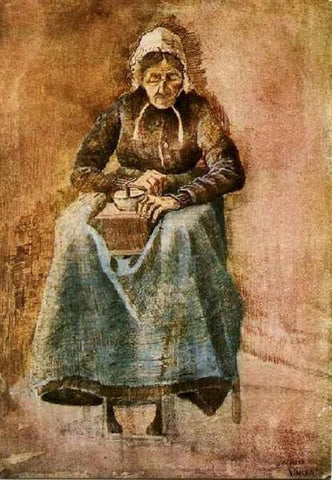-
Shop
- Coffee
- Tea
- Equipment
- Kitchenware
- Accessories
-
Gift Cards
- All Gift Cards
- Any Occasion
- Anniversary Card
- Back To School Cards
- Birthday Cards
- Chinese New Year Cards
- Christmas Cards
- Congratulations Cards
- Father's Day Cards
- Get Well Cards
- Graduation Cards
- Hanukkah Cards
- Housewarming Cards
- Mother's Day Cards
- New Baby Cards
- Secretary's Day Cards
- Thank You Cards
- Valentine's Day Cards
- Wedding Cards
- B2B
- FAQ
- Contact
- Sign in
-
CAD $
-
Shop
- Coffee
- Roasted Beans
- Unroasted Beans
- Check your beans!
- Coffee of the Week
- Tea
- Equipment
- All Coffee Makers
- French Presses
- Stovetop Espresso Makers
- Espresso Machines
- Brewers
- Pourover
- Vacuum Coffee Brewers
- Coffee Servers
- Coffee Roasters
- Grinders
- Cold Brew
- Tea Brewers
- Kettles
- Milk Frothers
- Travel Items
- Cleaning Supplies
- Filters
- Replacement Parts
- Bags
- Gift Ideas
- Kitchenware
- Cups & Dishes
- Container
- Kitchen Utensils
- Salt and Pepper Mills
- Accessories
- Gift Cards
- All Gift Cards
- Any Occasion
- Anniversary Card
- Back To School Cards
- Birthday Cards
- Chinese New Year Cards
- Christmas Cards
- Congratulations Cards
- Father's Day Cards
- Get Well Cards
- Graduation Cards
- Hanukkah Cards
- Housewarming Cards
- Mother's Day Cards
- New Baby Cards
- Secretary's Day Cards
- Thank You Cards
- Valentine's Day Cards
- Wedding Cards
- B2B
- FAQ
- Contact
What did coffee taste like 150 years ago?
by Lisa Peryman June 29, 2017
In light of the upcoming Canada Day celebrations, we thought to ask: what would our coffee addiction have looked like then?
The good news: we absolutely would have been able to forage for wild coffee in various parts of Canada - Quebec, Ontario and the coastal regions. Oh, the savings! Once gathered, we would have had to set about removing the coffee beans from the coffee cherries. Do you know how to do that? Do you know what a cherry looks like? A coffee plant? Let's say we managed to dry some beans, how would we roast and grind them all by ourselves with nothing but a spoon and candle? And we'd still never arrive at a sugar-free, non-fat, vanilla soy, double shot, decaf, no foam, extra hot, peppermint white chocolate mocha with light whip and extra syryp, so what's the point?

Truly, things were different then in this part of the world. The standard rule of thumb for making coffee in the 1800s was to boil the coffee grounds in water - the exact opposite of our current wisdom on the subject. It is thought that this strategy was more to do with just surviving the drink because water was filthy with contaminants. Over time, taste became impossible to ignore any longer and coffee thought progressed to adding the coffee grounds to boiled water and the beverage grew in leaps and bounds in popularity.
There was more to contend with 150 years ago beyond foul taste and dangerous water, however. We could expect our coffee beans to be disgusting right from the get-go, having been changed for the worse by seawater in transit on sailing vessels. The resulting stench was often disguised by coffee merchants with dyes made from rust(!) and other concoctions such as beef blood caramelized in sulfuric acid.
The situation was not at all fresh.
Roasting equipment: let's call it a great lack and one that would most certainly have affected flavour.
Meanwhile, coffee grinders - not very precise instruments at this stage. We would have had to lower our sights from a fine grind to the adventure of zero expectations, and, knowing little else, we might possibly have liked our coffee excruciatingly bitter and without a pulse. "I'd like a short, flat, burnt cup of swill please. Full stench."
The reality of early coffee should have driven drinkers to give up altogether and focus on alcohol, twigs, elbows, anything else, but some coffee historians think that the smell of coffee when roasted (even this era of coffee) is so good, it spurred people to keep at it.
In short, we have much to be thankful for 150 years later.
+Recent Articles
-
CANADA POST STRIKE UPDATE
September 26, 2025
-
The mighty press
June 30, 2025
-
Shipping Notes - When Placing an Order
May 08, 2025
-
Did Jesus drink coffee?
April 12, 2020
-
Gift Ideas - Pour over
December 16, 2018
-
Gift Ideas
November 20, 2018
-
I want my beans roasted. What next?
October 18, 2018
-
Beyond the Bean
May 15, 2018
-
Beyond the Bean for Business
April 26, 2018
-
Coffee World
February 01, 2018
Join our newsletter for weekly discounts!
Photography by Lisa Peryman and Richard C. Owens
© 2025 Green Beanery.
Powered By Green Beanery.






Lisa Peryman
Author
Lisa Peryman has worked with Greenpeace Australia and The Wilderness Society (Australia). She studied journalism in New Zealand and book and magazine publishing in Canada. Her background includes reporting and editing for daily newspapers and trade magazines, as well as creative copywriting for broadcast. Lisa is continuing her studies in Canada and currently works with Probe International as an editor and writer. Earnings from Green Beanery operations support the work of Probe International, a Canadian charity that works with citizens' groups around the world to protect their lands and their livelihoods. Probe International is a Canadian trust.